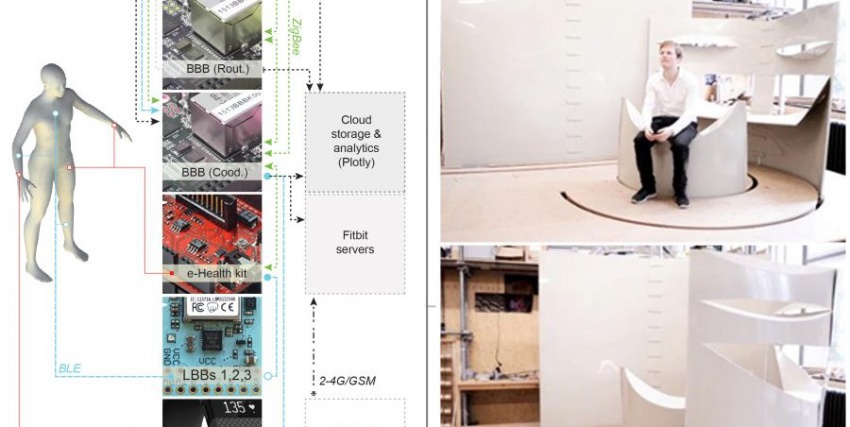Difference between revisions of "W4"
(→Objectives) |
|||
| (9 intermediate revisions by 2 users not shown) | |||
| Line 3: | Line 3: | ||
=='''D2RO: Design and Integration of a Meshed and Heterogeneous Wireless Sensor and Actuator Network into Cyber-physical Spaces'''== | =='''D2RO: Design and Integration of a Meshed and Heterogeneous Wireless Sensor and Actuator Network into Cyber-physical Spaces'''== | ||
| − | [[File: | + | [[File:D2ro 2.jpg | 850px]] |
<div style="height:30px; width: 850px; margin:0px; padding: 0px; padding-top: 20px; border: 0px;"> | <div style="height:30px; width: 850px; margin:0px; padding: 0px; padding-top: 20px; border: 0px;"> | ||
<div style="float:left; width: 200px; height 30px; border: 1px solid #aaa; margin-right:10px;" align="center"> | <div style="float:left; width: 200px; height 30px; border: 1px solid #aaa; margin-right:10px;" align="center"> | ||
| Line 10: | Line 10: | ||
<div style="float:left; width: 200px; height 30px; border: 1px solid #aaa; margin-right:10px;" align="center"> | <div style="float:left; width: 200px; height 30px; border: 1px solid #aaa; margin-right:10px;" align="center"> | ||
[[W4SCHEDULE|'''SCHEDULE''']] | [[W4SCHEDULE|'''SCHEDULE''']] | ||
| + | </div> | ||
| + | <div style="float:left; width: 200px; height 30px; border: 1px solid #aaa; margin-right:10px;" align="center"> | ||
| + | [[W4GROUPS|'''GROUPS''']] | ||
</div> | </div> | ||
</div> | </div> | ||
<br> | <br> | ||
| + | |||
| + | =='''Context'''== | ||
| + | |||
| + | This workshop is part of the Hiperorgânicos 8 – Ancestrofuturism, International Symposium on Research in Art, Hybridization, Biotelematics and Transculturalism held from 24-27th of May 2018 at the Laboratory of the Museum of Tomorrow, Rio de Janeiro. | ||
| + | |||
| + | <br> | ||
| + | ---- | ||
=='''Content'''== | =='''Content'''== | ||
| − | The workshop introduces | + | The workshop introduces participants to Design-to-Robotic-Operation (D2RPO) in order to achieve physical and sensorial reconfiguration in architecture. Students are asked to identify reconfigurable components (lights, ventilators, heaters, or shading devices, furniture, and other reconfigurable building components such as walls, floors, etc.) and possible reconfiguration strategies (turn on/off, move, rotate, bend, etc.). |
The workshop engages in the investigation of utopian/dystopian visions about future habitats by reinterpreting Constant’s New Babylon and introducing static and dynamic functionalities such as infrastructure (structural frame, circulation, water and electricity, etc.) and reconfigurable furniture respectively. Utopian/dystopian aspects are addressed by exploring on the one hand the potential of cyber-physical systems in architecture, on the other hand the challenges of overpopulation and urban densification, etc. | The workshop engages in the investigation of utopian/dystopian visions about future habitats by reinterpreting Constant’s New Babylon and introducing static and dynamic functionalities such as infrastructure (structural frame, circulation, water and electricity, etc.) and reconfigurable furniture respectively. Utopian/dystopian aspects are addressed by exploring on the one hand the potential of cyber-physical systems in architecture, on the other hand the challenges of overpopulation and urban densification, etc. | ||
| + | |||
| + | <br> | ||
| + | ---- | ||
=='''Objectives'''== | =='''Objectives'''== | ||
| Line 32: | Line 45: | ||
Henriette Bier and Alex Liu Cheng | Henriette Bier and Alex Liu Cheng | ||
| + | |||
| + | <br> | ||
| + | ---- | ||
=='''Workshop brief'''== | =='''Workshop brief'''== | ||
| − | pdf | + | [http://cs.roboticbuilding.eu/images/f/fb/WorkshopBrief.pdf pdf] |
Latest revision as of 12:36, 4 February 2021
D2RO: Design and Integration of a Meshed and Heterogeneous Wireless Sensor and Actuator Network into Cyber-physical Spaces
Context
This workshop is part of the Hiperorgânicos 8 – Ancestrofuturism, International Symposium on Research in Art, Hybridization, Biotelematics and Transculturalism held from 24-27th of May 2018 at the Laboratory of the Museum of Tomorrow, Rio de Janeiro.
Content
The workshop introduces participants to Design-to-Robotic-Operation (D2RPO) in order to achieve physical and sensorial reconfiguration in architecture. Students are asked to identify reconfigurable components (lights, ventilators, heaters, or shading devices, furniture, and other reconfigurable building components such as walls, floors, etc.) and possible reconfiguration strategies (turn on/off, move, rotate, bend, etc.).
The workshop engages in the investigation of utopian/dystopian visions about future habitats by reinterpreting Constant’s New Babylon and introducing static and dynamic functionalities such as infrastructure (structural frame, circulation, water and electricity, etc.) and reconfigurable furniture respectively. Utopian/dystopian aspects are addressed by exploring on the one hand the potential of cyber-physical systems in architecture, on the other hand the challenges of overpopulation and urban densification, etc.
Objectives
The principal objective of the workshop is to teach participants to design and to integrate a fully functional Wireless Sensor and Actuator Network (WSAN) into a Cyber-physical Space. WSANs lie at the core of Cyber-Physical Systems (CPSs) [1], which represent State-ofthe-Art enablers of both Architectural and Computational Intelligence in the built-environment. Strategies and methods pertaining to Design-to-Robotic-Operation (D2RO) [2–11]—an emerging computational intelligence in the built-environment paradigm developed at Delft University of Technology (TU Delft) [10–12]—are used to develop this WSAN in an open, scalable, and decentralized manner.
D2RO subsumes capabilities and motivations typical expressed via Ambient Intelligence (AmI) [13] / Ambient Assisted Living (AAL) [14], which are research fields situated at the intersection of the Engineerings (viz., Electrical, Electronic, Mechatronic, and Information Systems), Architecture, and Medical Sciences. Accordingly, an inherited motivation behind D2RO is to develop built-environments where systems and services expressed in terms of Information and Communication Technologies (ICTs) promote and sustain the general well-being, qualitative spatial experience of the inhabited space, and the comfort of the occupant(s).
Tutors
Henriette Bier and Alex Liu Cheng
